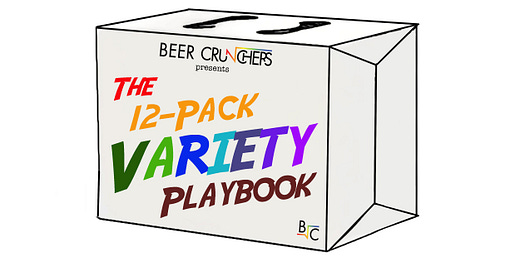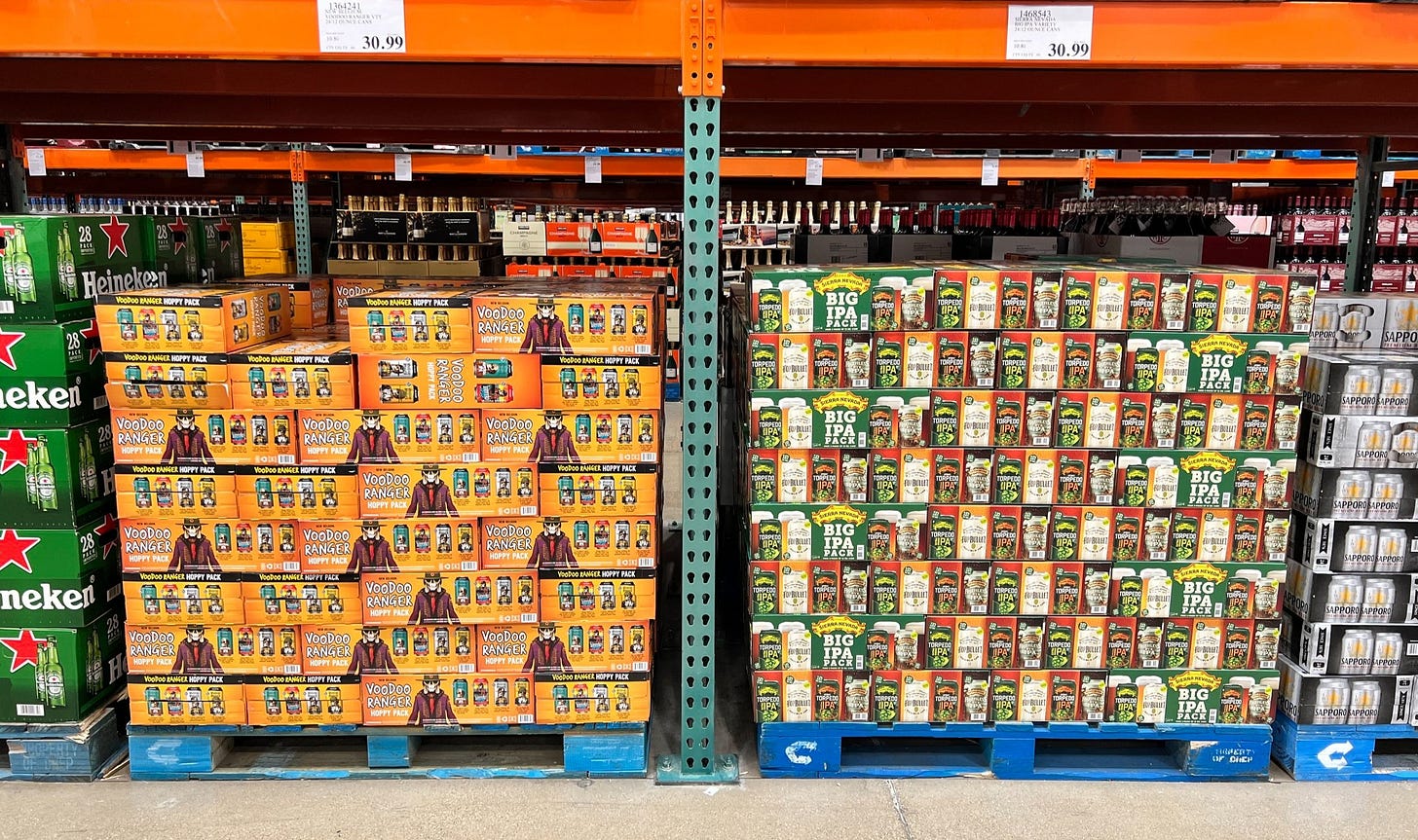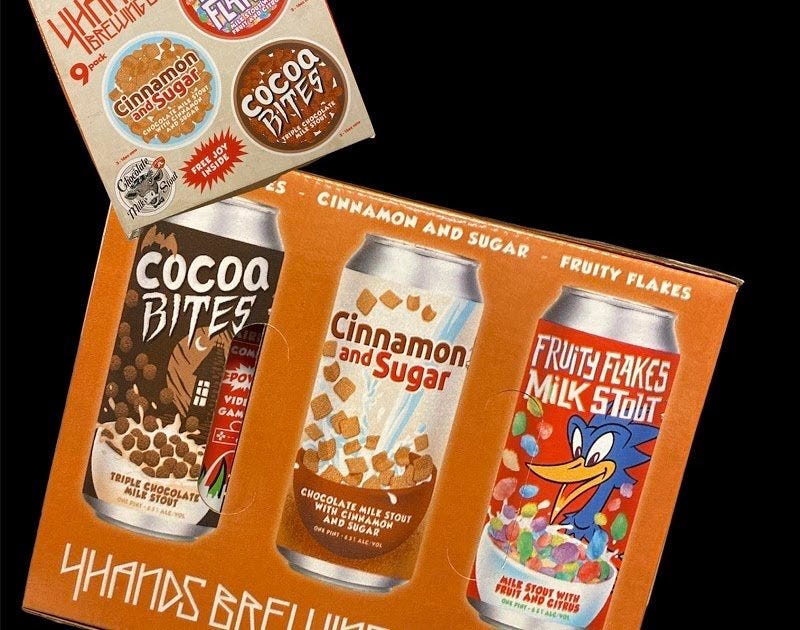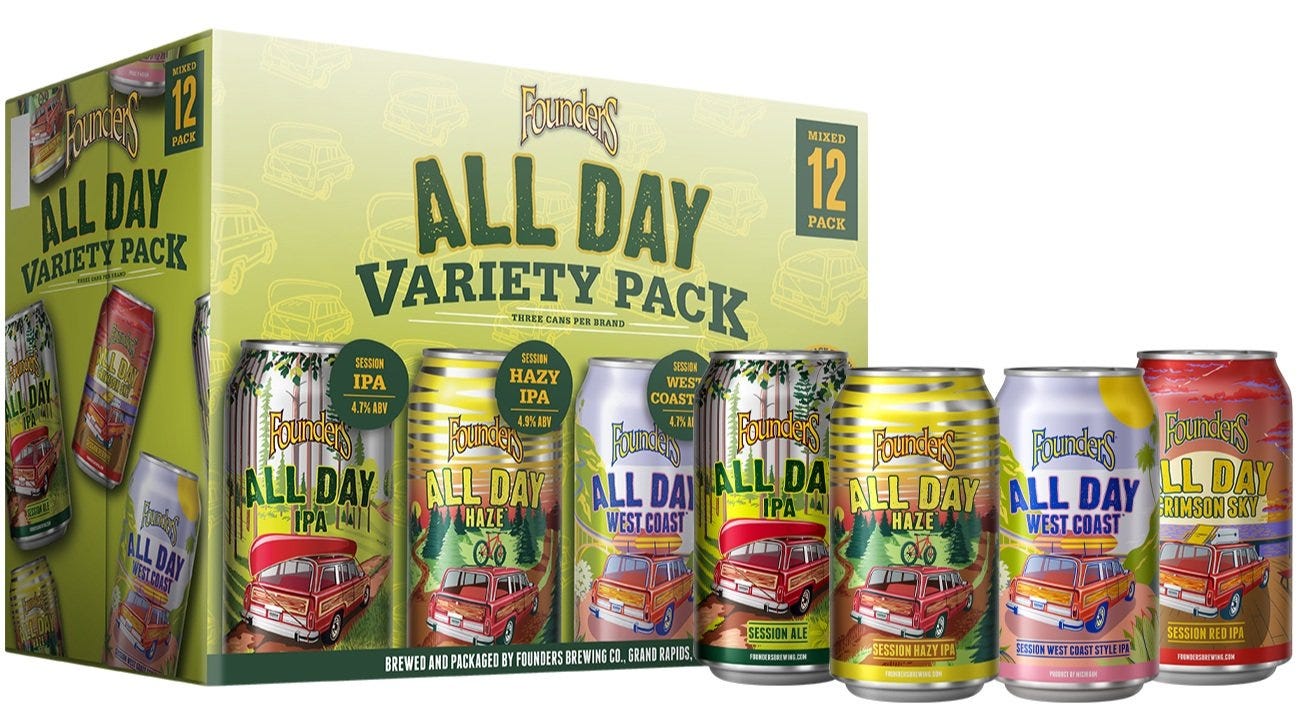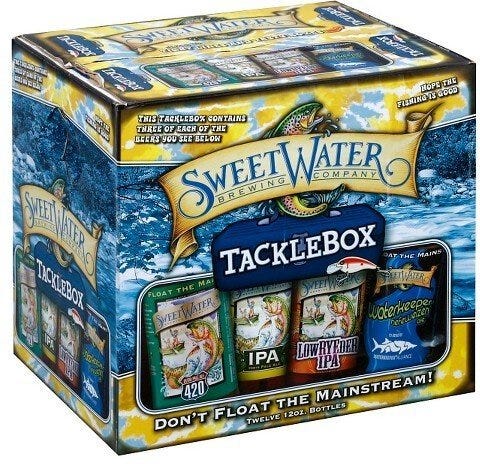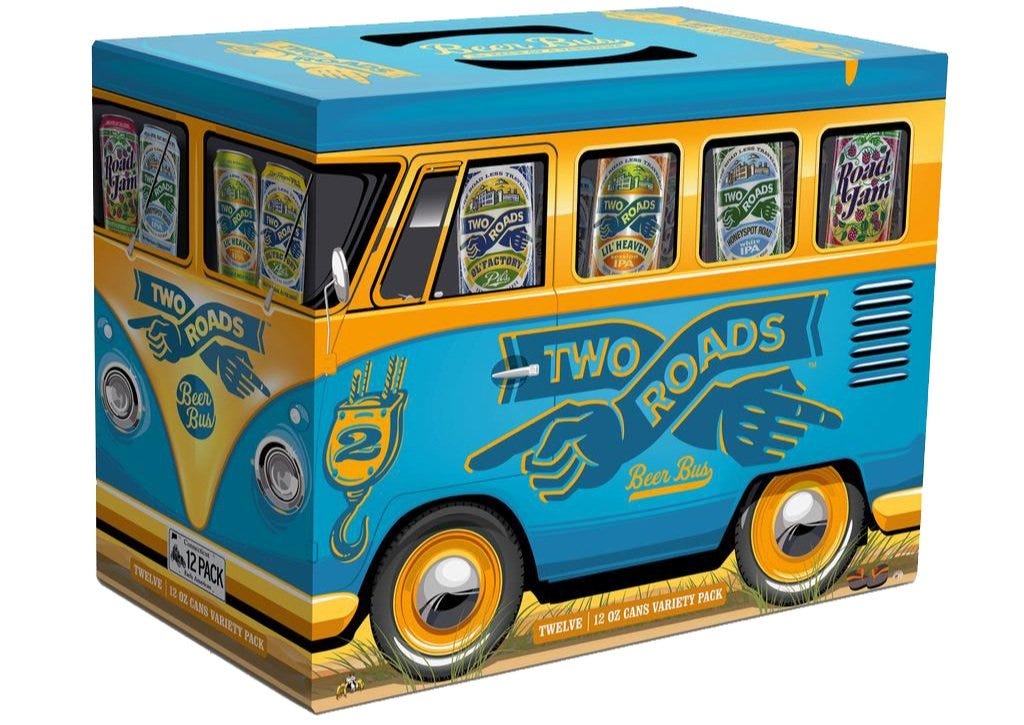The 12-Pack Variety Playbook
When I joined Revolution Brewing as CFO in 2016, one of my first tasks was to review the equipment loan on the purchase of our first ever “cartoner”. This capital investment just north of $200,000 was described by our operations team as “entry level” in that the machine wasn’t high speed enough to handle our 6-pack business. Instead it provided an affordable entry point to “go for volume” by utilizing larger sizes, primarily 12-packs. In addition to our Pale Ale Fist City, we were prepping for the launch of League of Heroes, a first of its kind Variety Pack.
When you’re the largest independent craft brewery in the state, making one of the only craft variety packs locally, there’s not a lot in the way toward rising to #1. The bigger challenge is maintaining that high level of sales seven years later, where League of Heroes remains a top selling variety packs despite heavy competition. To stay relevant all these years, “League” required one investment after another.
If you’re a fan of efficiency, prepare to hate everything you’re about to read. If you enjoy selling more beer, then strap in because variety packs continue to be a phenomenon in craft beer. After accelerating during the pandemic, they’ve continued pressing forward as craft’s largest growth category (in $), up 10% in the last 52 weeks. The blueprint for success has evolved significantly, requiring a more sophisticated and costly strategy in order to stay competitive. Here’s a twelve-pack of considerations to make sure your next Variety Pack has the winning combination.
GOALS OF THE PACK
Before putting actual dollars behind the development of a Variety Pack, it’s crucial to talk through the full extent of goals for this new item, both short term and long term. Not just what the pack is specifically trying to do, but also what it’s not expecting to accomplish as well. If done thoroughly and communicated well, this exercise will ensure all parties internally are on the same page and your partners are fully bought in.
1. SELL MORE BEER, DUH
Let’s briefly touch on the obvious. The goal of most portfolio updates is to sell more beer, or prevent future losses I suppose. Variety Packs are arguably the best means to meet that challenge because they are sold in volume by Craft Beer standards, typically 12-packs versus the standard 4/6-packs, and help consumers meet a wide number of occasions and circumstances including:
Low commitment means of discovery
Gamified approach, trying as many unique beers as possible
Desire for different options for varying moods.
Having guests over and valuing choice
While selling more beer is the primary goal, the best variety packs will check additional boxes, like:
2. SALUTING THE FLAG
Flagship beers remain a challenge for most breweries despite the fact that they’re often the most complete, dial-ed in recipe in their arsenal. They’re the company’s best seller because of wide appeal, but that usually doesn’t translate to being the most adventurous or contemporary. Including a flagship brand in a variety pack is a viable strategy toward keeping that flame burning and in some cases restoring appreciation for the brand.
There are always trade-offs and while most aspects of a Variety Pack are for the benefit of the consumer, including a flagship is a major plus for the brewery. Each League of Heroes has always contained three cans of our flagship Anti-Hero IPA, with the character front-and-center on the box. This model has now become commonplace around the country.
3. SLOW YOUR ROLE
For a brewery who is ahead in their liquid innovation, Variety Packs serve as a productive means for debuting and trialing new concepts, techniques, ingredients, or even terminology. With SKUs constantly being rationalized, the portfolio can’t always keep up with the new ideas coming out of the brewing team. Multi-packs can serve as Triple A, to use a baseball analogy, before proving oneself and being called up to the show as a standalone brand.
Each issue of League of Heroes features the debut of a new Hero IPA, providing a recurring pipeline for our IPA trials and innovation. The last two year-round Hero IPA launches at Revolution, Hazy-Hero & Infinity-Hero, were built off concepts that were first piloted in the variety pack.
4. VARIETY OR EXPERIENCE?
Traditionally, variety packs offered consumers actual variety of styles. Crazy right? 🤯 The classic examples of yesteryear would include a combination of beer styles like Porter, Pale Ale, Pilsner, and Wheat Beer for example. Today however, most variety packs are showcasing variations of a single style, most commonly IPA. The positive term to describe these packs would be experiential, where you’re guided through 3-4 different takes on a beer style that you enjoy. While IPA has the widest reach, there are also opportunities to go more niche where there’s less competition.
5. SQUAD GOALS
Nowadays, variety packs are commonly being deployed as a means to build and extend families of brands, uniting them in a series. I personally prefer when that family stays within the limits of a general style, like IPA, Lager, Stout, etc. Doing so adds a self-explanatory nature to each entry in the series and increases the odds that consumer expectations are met. Enjoy Two Hearted? Then you’re odds of enjoying Light Hearted, Cold Hearted, Black Hearted, Hazy Hearted, Big Hearted, and Change of Heart have gone up, assuming the concept passes the basic sniff test. More importantly, the brand will be intuitive to the consumer, which I cannot emphasize the importance of enough.
There’s no rule around keeping a family of brands within a style however, as each brewery’s architecture is set up or has evolved differently. Sierra Nevada famously created their “Little Thing” series on the backs of an IPA, but extended into a Hoppy Wheat (Sunny) and a Kettle Sour (Wild). Though not my preferred way to structure a brand family due to the risk of confusion and disappointment, doing so has its advantages. In Sierra’s case, they’re able to create a variety pack that offers the rare combination of true variety, while maintaining brand continuity.
CONSTRUCTION
6. STAYING IN YOUR LANE
When designing a canning line, a decision is made around the number of lanes that are feeding into the “cartoner.” That decision puts restrictions around the numerical combinations that a brewery can utilize in a variety pack. For example, the most common decision is to have 4 lanes, setting the operation up to create variety packs with 4 unique brands, 3 of each.
But what happens if that brewery wants to make a Variety Pack that’s only 3 brands, and gives 4 of each? The math doesn’t work with how the canning line is laid out, so they’re kinda screwed. Now, if they REALLY wanted, could they come up with a work around? Possibly, but it likely requires an extensive and unnecessary amount of maintenance work to complete this unnecessary “changeover”.
Founders Brewing is known best for two things: All Day IPA & 15-Packs. So why would their first ever All Day-themed variety pack only be a 12-pack? I suspect their operation’s canning line is part of the reason, in addition to the cost vs. price dilemma that we’ll get into shortly.
7. STRENGTH IN EXCLUSIVITY
The higher the degree of operational difficulty added to a Variety Pack, the more compelling it tends to be for customers. A unique new recipe that can only be found in the Variety Pack will add incremental fixed costs, plus the challenge of selling a brand whose only outlet is these 3 cans per pack. However for fans of the brand, purchasing a 12-pack becomes the only way to obtain this beer and thus, helps it sell. Each League of Heroes contains three exclusive heroes that can’t be purchased anywhere else, and except in a rare occasion, not even on draft at our Taproom.
8. WHO DOESN’T LOVE A GOOD THEME
Not only do today’s Variety Packs have a theme with regards to a particular beer style, they often unite the brands with a catchy name and box design that builds on that commonality, occasion, pop culture reference, hobby, or interest. Atlanta’s Sweet Water Brewing has always done a nice job playing into their wide-reaching love of both cannabis 💨 and fishing 🎣 .
The basic concept behind League of Heroes had already been established when I joined Revolution, but I arrived just in time to inject a few touches of my own, pulling from my childhood love of comics. Each debuting IPA would be called out on the box as making its “First Appearance” and each new rotation would be given an “Issue #”, just like a comic book series.
9. ROTATION
By nature, the customers who buy Variety Packs are not going to be the most loyal. Therefore, these SKUs are at risk of losing momentum in a hurry and becoming stale. Rotating the assortment seasonally will increase the odds of repeat sales throughout the year, in exchange for the increased cost and operational complexity taken on. At Revolution, we attacked this opportunity head on with League of Heroes.
By Issue 12, we decided that the concept needed another layer of excitement to support its continued traction. Rather than solely changing out the cans, names, descriptions, and “Issue #” on the outer carton, we decided to make each box’s underlying artwork be completely unique, like the cover of a comic book. All text and graphics would be in the same place, but the scene in the background would look brand new.
For Issue 13, we took it a step further making sure the theme of the carton matched the debuting character, in this case Pro Wrestling. Then since Issue 15, all exclusive Heroes in each “Issue” of the pack fall within a universal theme. Thus far we have executed Winter, Mythology, Water, Music, and coming up next: Video Games. Here’s the progression:
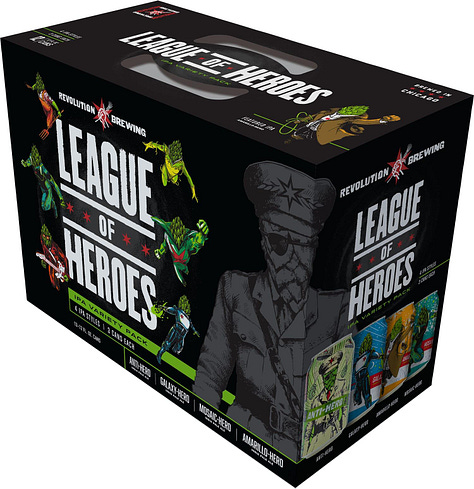

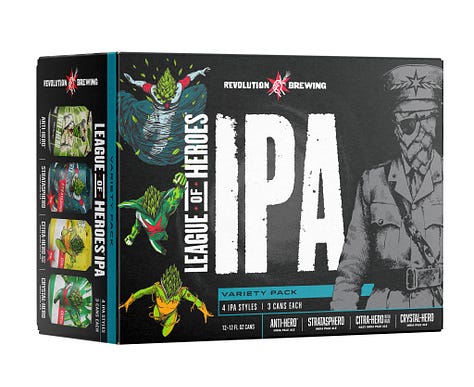


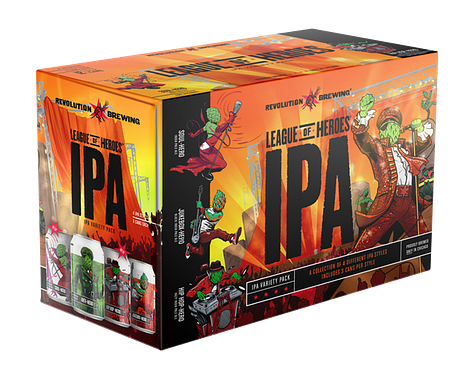
THE ECONOMICS
10. “EVERYBODY’S GOT A PRICE…”
…And variety packs come at a steep one. In addition to the costs of a standard 12-pack, variable packs could come with any or all of these additional one-time and variable costs:
Artwork & One-time Art Setup Fees - In addition to paying a designer to develop cans that are unique or exclusive to the variety pack, vendors charge one-time fees to set up the plates to run printed cans which can range in the $2,000 - $4,000 range per can depending on complexity of the artwork. The same situation goes for changing the artwork on the carton. If rotating seasonally, then multiply these incremental costs by 2-4x per year.
Uneven Yields - When producing four unique beers, a poor yield from just one will completely throw off your volumes and leave you with liquid for 3 brands and nowhere to go. Sure, you can make up six-packs in your Taproom, but depending on the brewery’s scale, that’s not going to put a dent in things.
Re-Packing Labor - In probably 100% of cases, craft breweries do not have 4 can fillers, they have 1. Therefore, each member of the variety pack needs to be canned separately, forklifted to the cooler to stay cold, then eventually brought back out once all the needed beers are canned or bottled. A manual re-pack process follows, adding one or more additional shifts from the packaging team to get the final product ready. During this process there’s a whole lot of…
Wasted Trays - If the case tray that holds two 12-packs together is glued inline on a brewery’s canning line, then it’s really not possible to reuse these trays. While the Taproom can use some of them for customer to-go beer and other one-off needs, there’s usually more than they’d ever need. Therefore most have to go straight to recycling, adding something like $0.25 of addition cost for each case produced.
Wasted Packaging - For breweries rotating their variety pack, good luck trying to match up the number of cartons you actually need with the right amount of cans. These vendors may get a +/- 10% accepted variance on how many units they actually provide versus what you order as well. In the end, you’re always going to be long on something and forced to write it off a number of cans and/or cartons.
11. “…AND SOMEBODY’S GONNA PAY”
Craft brewers have historically faced a psychological price barrier of $19.99. It’s been widely accepted by beer buyers, distributors, and regional/national breweries that craft beer 12-packs needed to be positioned beneath that marker at larger big box stores in order to sell. It’s one thing to hit that price with a 12-pack of a single, flagship beer made in the operation’s largest tanks, but doing so with the added cost components of variety packing requires support from distributors and retails to work on lower margins, to support these higher velocity SKUs.
With all the increases in input costs, labor, rents, etc. over the last few years, that $19.99 imaginary price ceiling is being put to the test especially by smaller, local breweries. It’s still yet to be determined whether consumers are accepting of the $21.99s and up for a Variety Pack, but these cost/price discussions need to happen in the earliest stages of a variety pack’s development to ensure all parties are bought into the modified economics needed to make them sustainable.
12. FRESH MISCONCEPTIONS
I can’t begin to tell you how many times I’ve heard snarks say in reference to Variety Packs, “isn’t that just where breweries shove their old beer that isn’t selling?” While it’s conceivable that this was a tactic before the craft boom early last decade, especially with beer-of-the-month clubs and perhaps some club store packs, it’s pretty much impossible to be the case now.
Variety Packs are major SKUs in brewery portfolios, receiving highly customized packaging, and are being counted on by the largest retailers in the country to be fresh and in-stock. The original premise behind League of Heroes was not a comic-book themed variety pack, it was to offer a freshness experience previously unavailable to most IPA fans. These days if a brewery thought they could get away with only packing variety packs when they had too much of one or multiple poorly selling beers, they’d be out of business.
PACK IT IN
Feeling out of your “league”? While it may sound like these tactics only apply to regional and national breweries, that couldn’t be further from the truth. For a price of course, flexible packaging options like glue-less, self-folding cartons exist for any sized operation. These typically require a creative system to be developed utilizing boxes & labels in tandem, in addition to the sheer will to make it happen.
Competition is rising, so it’s time to reach deeper into the playbook. Adding a variety pack to the portfolio is by no means easy. They tie up 4 tanks instead of one and are riddled with incremental costs, loss, and inefficiency. But that’s the point. If they were easy, everyone would have one. Simple and straightforward has a lot of merit in craft beer today, bringing much needed focus to methodically navigate down the field. Variety packs are the deep ball down field.


